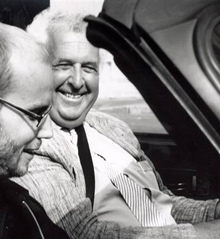 |
> Interview with Hani Rashid, Chair of the Jury
> Interview with Francis Nordemann
> Interview with Eva Jiřičná
 |
 |
| Designer and designer of urban plans, vice president of the European Association for Architectural Education (EAAE). Francis Nordemann is a professor at the Paris School of Architecture in Belleville. In his private professional practice, he focuses primarily on residential housing projects and urban design. Buildings based on his designs are realized in France, Italy, and the USA. Nordemann serves as a visiting professor at the University of Kentucky, Columbia University, and the University of Pennsylvania. As a professor, he also teaches at the Lyon School of Architecture and the Normandy School of Architecture. Francis Nordemann represents the European Association for Architectural Education (EAAE) on the jury. |